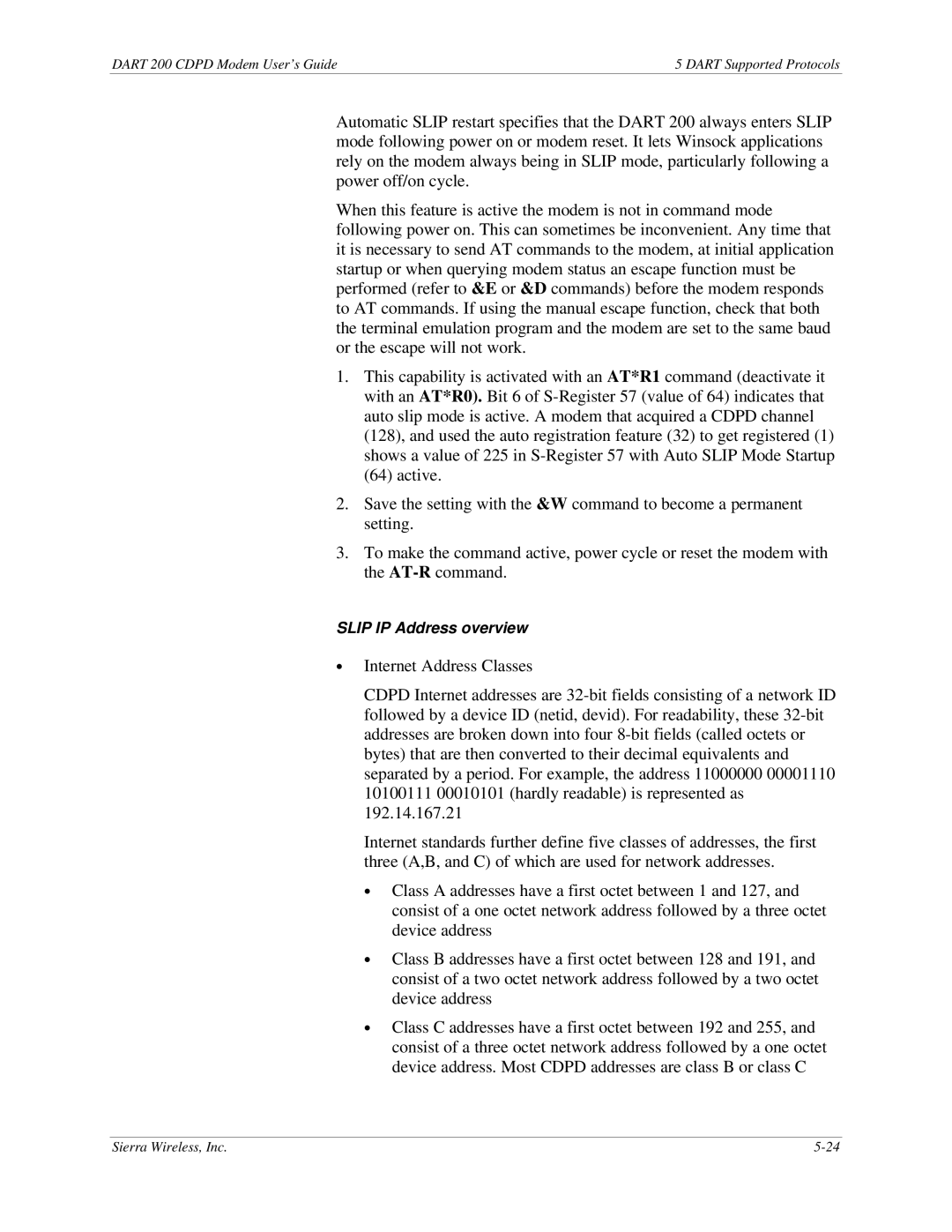DART 200 CDPD Modem User’s Guide | 5 DART Supported Protocols |
Automatic SLIP restart specifies that the DART 200 always enters SLIP mode following power on or modem reset. It lets Winsock applications rely on the modem always being in SLIP mode, particularly following a power off/on cycle.
When this feature is active the modem is not in command mode following power on. This can sometimes be inconvenient. Any time that it is necessary to send AT commands to the modem, at initial application startup or when querying modem status an escape function must be performed (refer to &E or &D commands) before the modem responds to AT commands. If using the manual escape function, check that both the terminal emulation program and the modem are set to the same baud or the escape will not work.
1.This capability is activated with an AT*R1 command (deactivate it with an AT*R0). Bit 6 of
2.Save the setting with the &W command to become a permanent setting.
3.To make the command active, power cycle or reset the modem with the
SLIP IP Address overview
∙Internet Address Classes
CDPD Internet addresses are
Internet standards further define five classes of addresses, the first three (A,B, and C) of which are used for network addresses.
∙Class A addresses have a first octet between 1 and 127, and consist of a one octet network address followed by a three octet device address
∙Class B addresses have a first octet between 128 and 191, and consist of a two octet network address followed by a two octet device address
∙Class C addresses have a first octet between 192 and 255, and consist of a three octet network address followed by a one octet device address. Most CDPD addresses are class B or class C
Sierra Wireless, Inc. |
